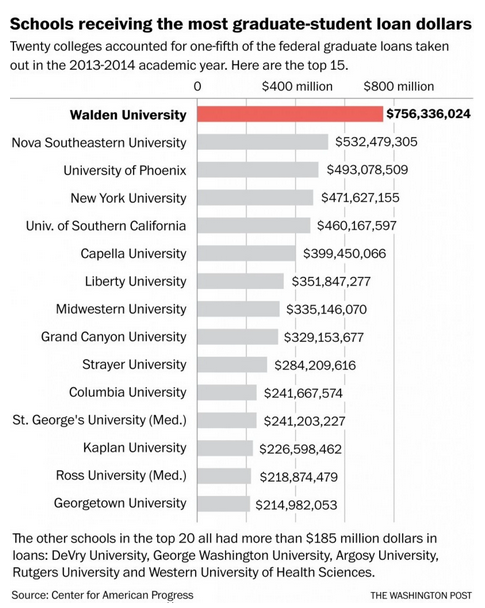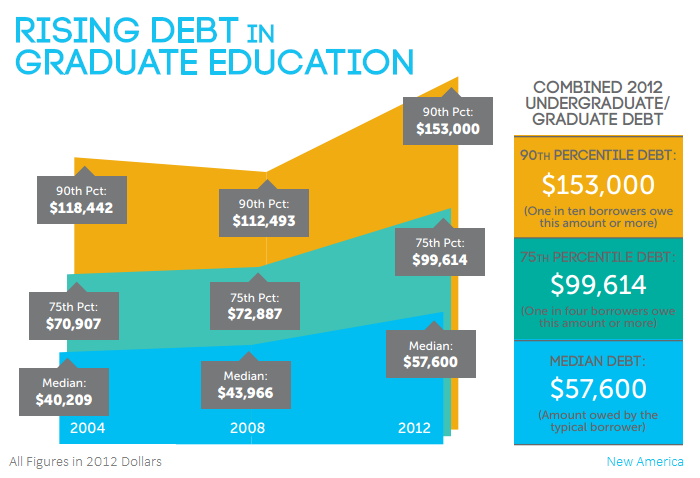
We’ve written before how graduate school debt has a huge impact on the total amount of student debt in the U.S.
Many students, unable to find a high-paying job after college, think that graduate school is the answer–only to face the reality of high debt and a minimal increase in salary and job prospects.
And according to a new study from the Center for American Progress, as reported by The Washington Post, a small number of schools are responsible for a large portion of the student debt problem.
When most people talk about student debt, they talk about it in terms of undergraduates. Indeed, undergraduate student debt remains a real issue, with the average graduate leaving college with $29,000 in student loans. But according to Time Magazine, there’s an even bigger problem that’s not frequently talked about in the media: graduate student debt. […]

And you thought undergraduate student loan debt was bad.
According to a new report by the New America Foundation, the median debt load for borrowers leaving school with a master’s, medical, law or doctoral degree was $57,600 in 2012–about twice the average amount today’s typical undergrad leaves college with.
This represents a 43% increase from 2004 to 2012 when adjusted for inflation.
On Wednesday, July 31, 2013, the U.S. House gave final passage to a compromised bill for student loan interest rates. The president signed it into law on August 9, 2013.
For new student loans made since July 1, 2013, the new rates for this year will be 3.86% fixed for undergraduate Direct subsidized and unsubsidized loans, 5.41% fixed for Graduate Direct unsubsidized loans and 6.41% fixed for Direct PLUS loans. This is significantly less than borrowers would be paying if a deal hadn’t been brokered.